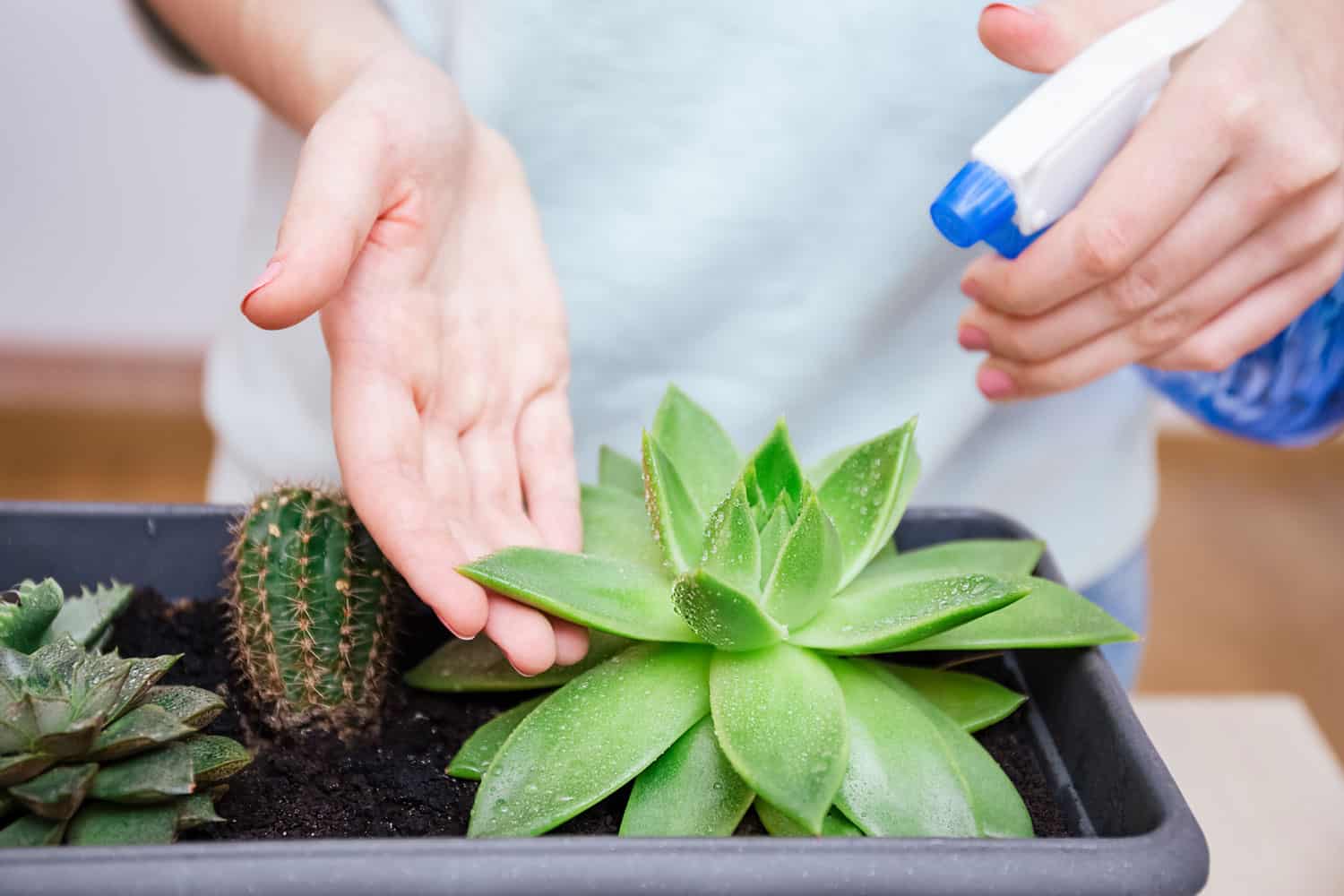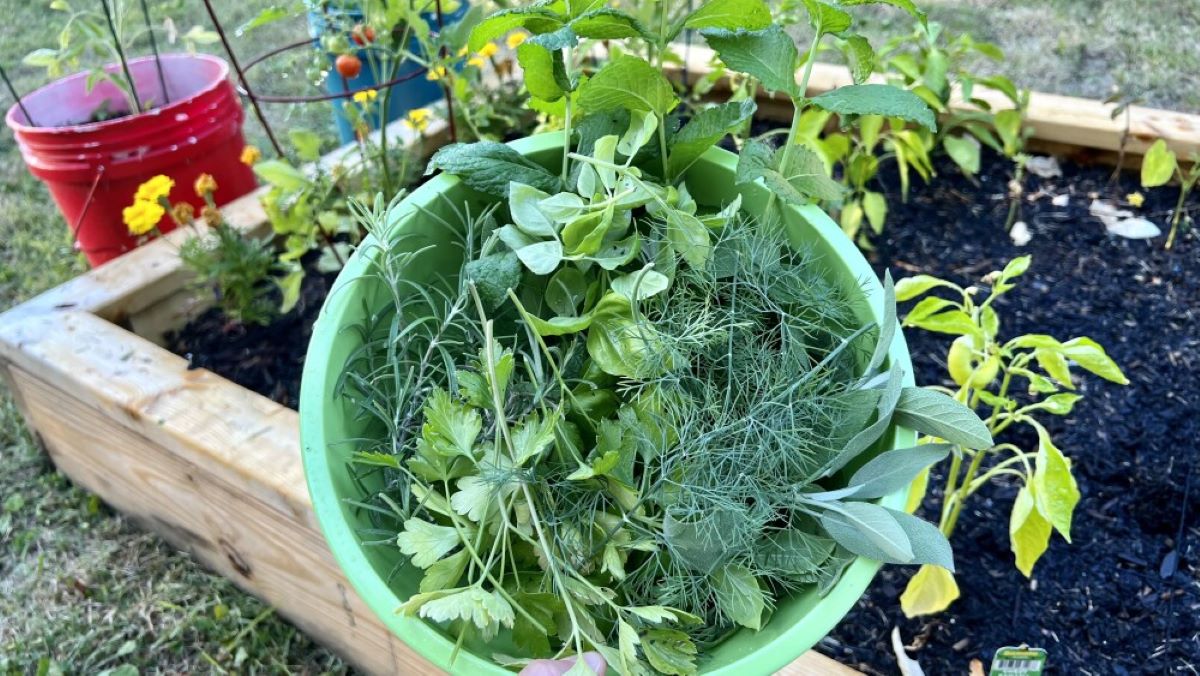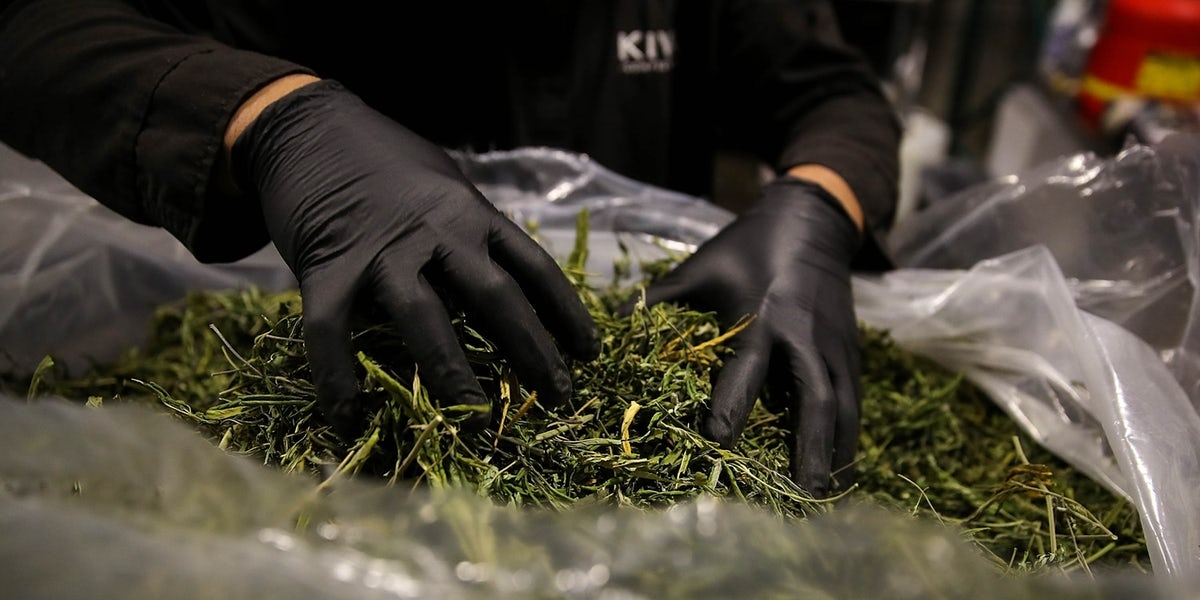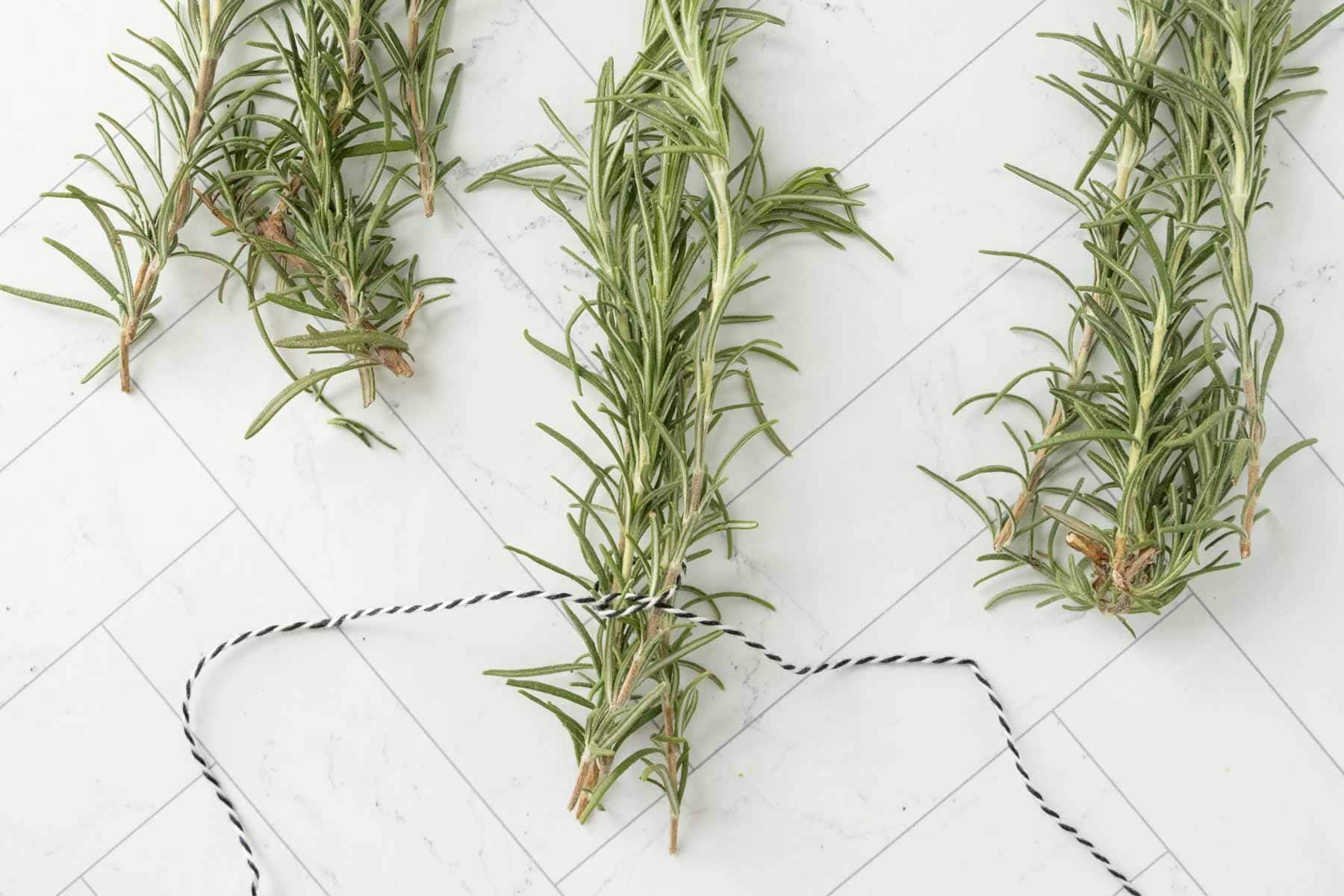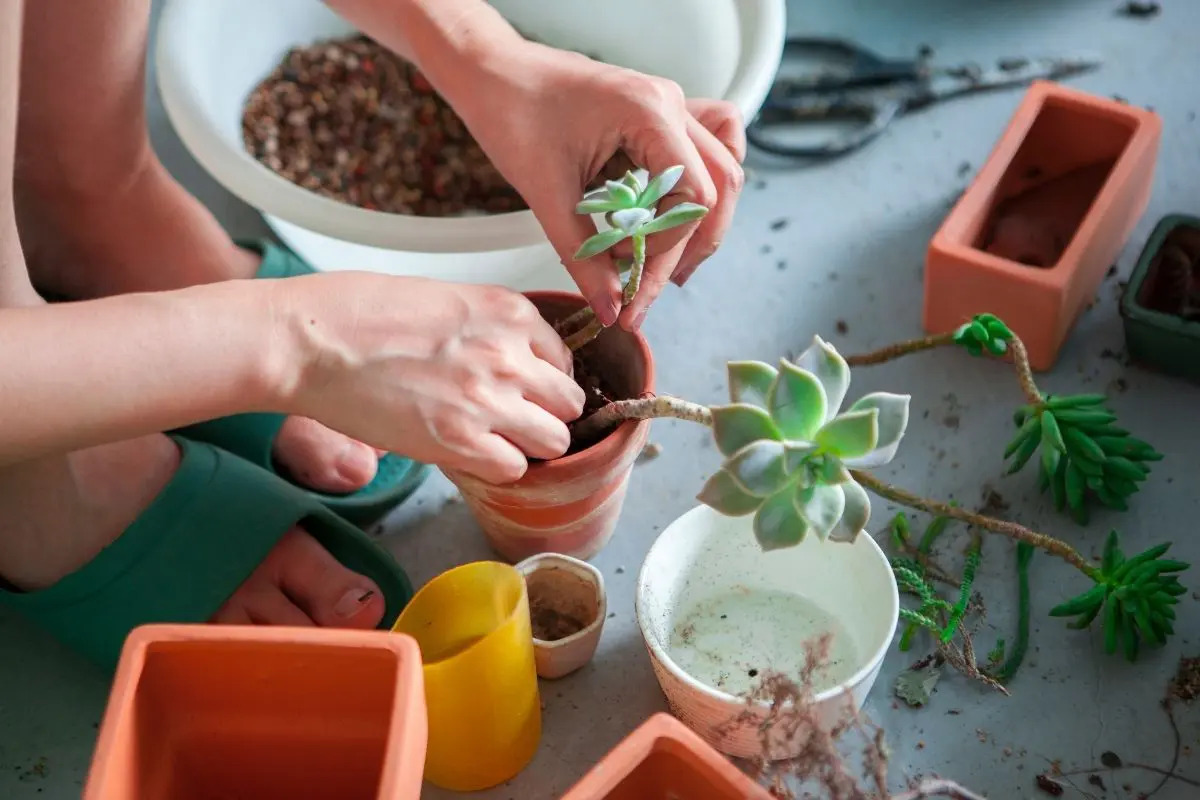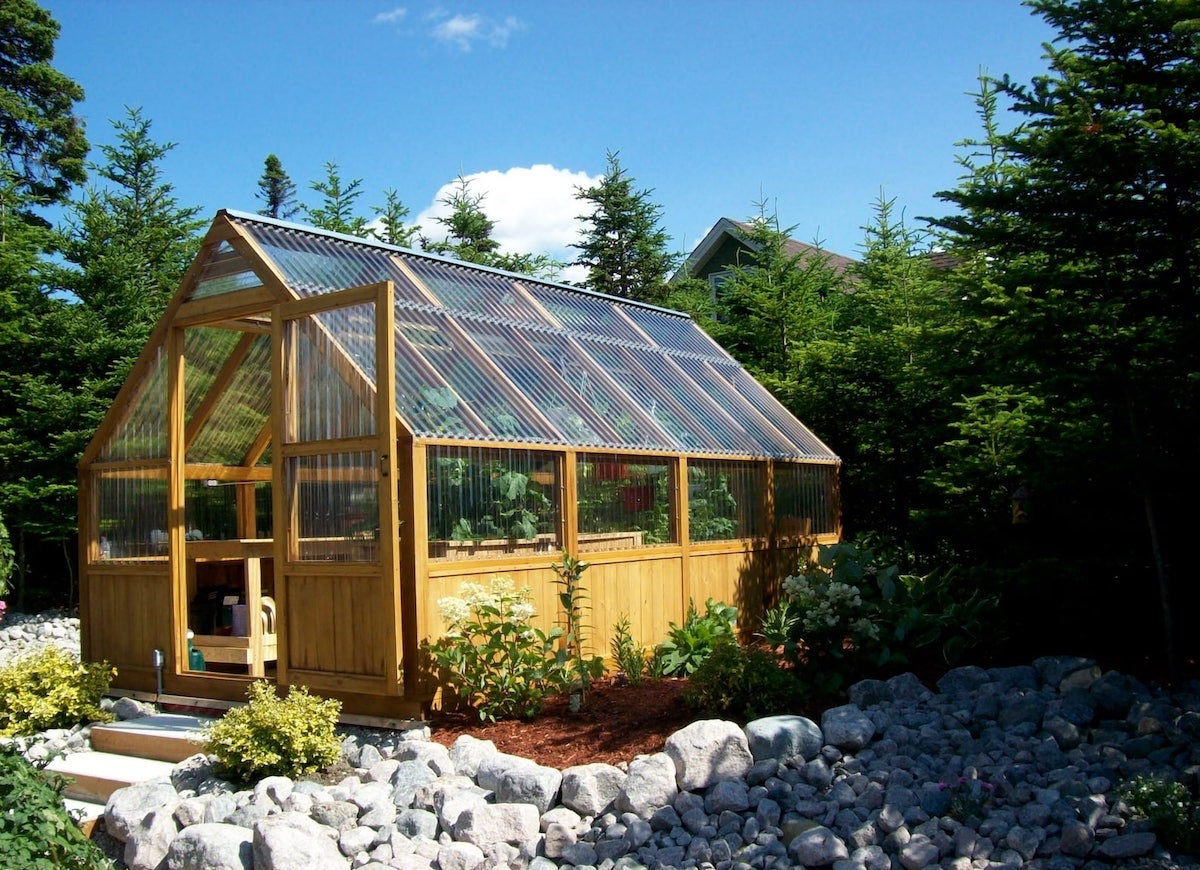Home>Gardening Techniques>Plant Care>How Do You Separate Succulents
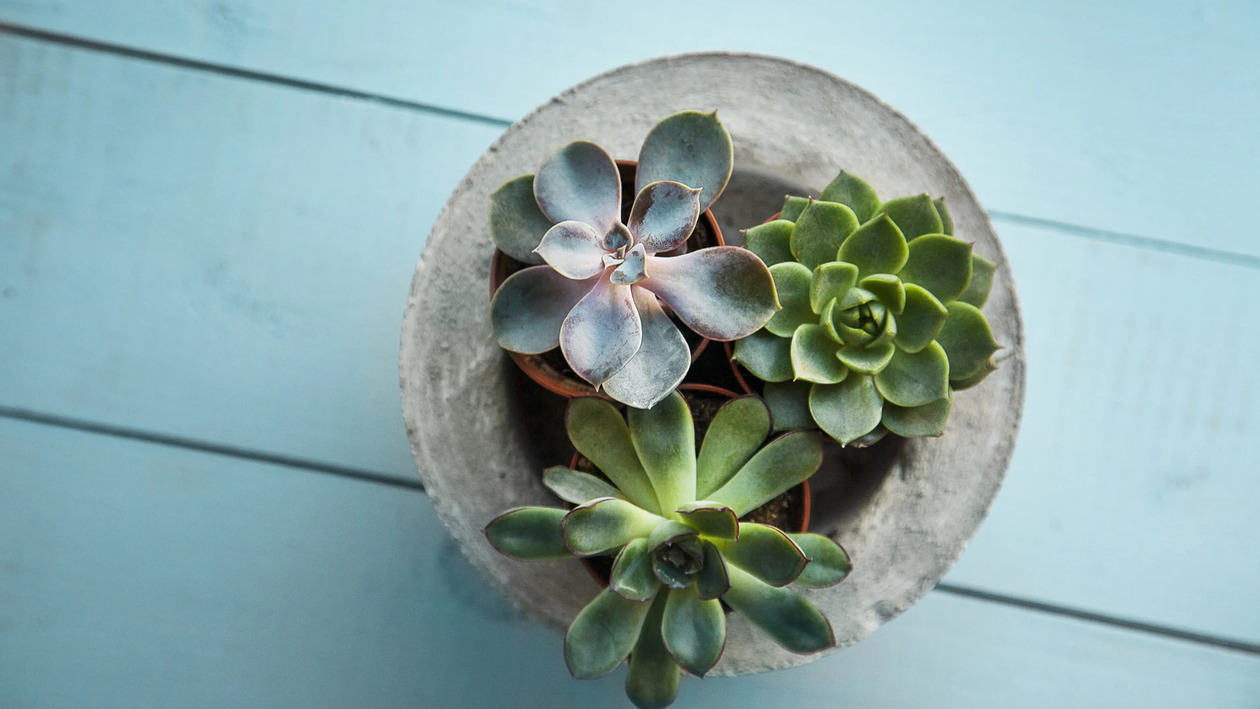

Plant Care
How Do You Separate Succulents
Published: December 29, 2023
Learn how to separate and propagate succulents with these expert plant care tips. Discover the best methods for dividing and caring for your succulent plants.
(Many of the links in this article redirect to a specific reviewed product. Your purchase of these products through affiliate links helps to generate commission for Chicagolandgardening.com, at no extra cost. Learn more)
Table of Contents
Introduction
Introduction
Succulents have become increasingly popular in recent years, adorning homes, offices, and outdoor spaces with their vibrant colors and unique shapes. These resilient plants are known for their ability to store water in their leaves, stems, and roots, making them well-suited for arid environments. One of the appealing aspects of succulents is their propensity to propagate and multiply, allowing plant enthusiasts to expand their collection with ease.
As succulents grow, they often produce offsets, also known as pups, which are essentially baby plants that sprout from the parent plant. This natural process presents an opportunity for succulent owners to propagate new plants by separating these offsets from the parent. However, the task of separating succulents requires careful consideration and proper technique to ensure the health and vitality of the plants.
In this comprehensive guide, we will delve into the art of separating succulents, exploring the various factors to consider and the methods to employ for successful propagation. Whether you are a seasoned succulent aficionado or a novice plant enthusiast, this guide will equip you with the knowledge and skills to effectively separate succulents and expand your green oasis. Let's embark on this succulent propagation journey and unlock the secrets to nurturing thriving succulent offspring.
Understanding Succulents
Before delving into the intricacies of separating succulents, it is essential to grasp the fundamental characteristics of these captivating plants. Succulents belong to a diverse group of plant species that have evolved to survive in arid and semi-arid regions, where water is scarce and unpredictable. They have adapted to thrive in harsh conditions by developing specialized water-storage tissues in their leaves, stems, or roots, enabling them to endure extended periods of drought.
One of the defining features of succulents is their unique appearance, characterized by fleshy, swollen, or spiky leaves that serve as reservoirs for storing water. This adaptive trait allows succulents to thrive in environments where other plants struggle to survive, making them a popular choice for both indoor and outdoor settings.
Succulents come in a remarkable array of shapes, sizes, and colors, ranging from the iconic rosettes of Echeveria to the strikingly tall and architectural forms of Agave. Their diversity and low-maintenance nature make them an appealing option for plant enthusiasts of all levels, from beginners to seasoned gardeners.
Furthermore, succulents have the remarkable ability to reproduce asexually, giving rise to offsets or pups that can be separated from the parent plant and grown into new individuals. This natural propagation process is a fascinating aspect of succulents and provides an opportunity for plant lovers to expand their collection and share the beauty of these resilient plants with others.
Understanding the unique adaptations and reproductive capabilities of succulents lays the foundation for successful propagation and cultivation. With this knowledge in hand, we can now explore the factors to consider when embarking on the journey of separating succulents.
Factors to Consider
When preparing to separate succulents, several important factors should be taken into account to ensure the health and viability of the parent plant and the offspring. Understanding these considerations is crucial for making informed decisions and executing the separation process effectively.
Plant Health: Before initiating the separation, assess the overall health of the succulent. Ensure that the parent plant and the offsets are free from any signs of disease, rot, or pest infestations. Separating healthy specimens increases the likelihood of successful propagation and minimizes the risk of transmitting any issues to the new plants.
Maturity of Offsets: Evaluate the maturity of the offsets to determine the optimal time for separation. While it may be tempting to separate the pups as soon as they appear, allowing them to develop and establish their own root systems will contribute to their resilience and ability to thrive independently. Look for well-formed roots or sufficient growth before separating the offsets from the parent.
Season and Growing Conditions: Consider the prevailing season and growing conditions when planning the separation. Spring and early summer are generally ideal times for separating succulents, as the warmer temperatures and increased sunlight promote root development and overall growth. Additionally, ensure that the succulents have been adequately watered before the separation to reduce stress on the plants.
Choice of Method: Select the most suitable method for separating the succulents based on the specific species and growth patterns. Different succulent varieties may respond differently to separation techniques, so it is essential to research and understand the preferences of the particular plants being propagated. Whether employing the division, beheading, or leaf propagation method, tailor the approach to the unique characteristics of the succulents involved.
Post-Separation Care: Plan for the care and maintenance of the parent plant and the separated offsets after the process is complete. Providing appropriate growing conditions, including well-draining soil, adequate sunlight, and proper watering, is essential for supporting the establishment and growth of the new plants. Monitor the separated offsets closely and make adjustments to their care as needed to promote healthy development.
By carefully considering these factors and preparing accordingly, succulent enthusiasts can set the stage for a successful separation process and nurture thriving offspring. With these considerations in mind, let’s explore the methods of separating succulents to propagate new plants and expand our succulent collection.
Methods of Separating Succulents
When it comes to separating succulents, several methods can be employed to propagate new plants from offsets or established specimens. Each method offers unique advantages and is suited to different succulent species and growth patterns. Understanding these techniques is essential for successfully expanding your succulent collection and ensuring the health and vitality of the propagated plants.
Division: The division method involves carefully separating the offsets or pups from the parent plant using a clean, sharp knife or shears. It is crucial to ensure that each offset retains a portion of the root system to support its growth. Gently remove the offset and allow the cut end to callus for a day or two before planting it in well-draining soil. This method is suitable for succulents that produce distinct, separate offsets, such as Haworthia and Aloe species.
Beheading: Beheading is a method commonly used for tall or leggy succulents, such as Echeveria and Sedum, to encourage branching and produce new rosettes. With a clean, sharp knife, carefully remove the top portion of the succulent, ensuring that several leaves are left at the base. Allow the cut end to callus before placing it on top of soil or directly planting it. The remaining stem will often produce new growth, contributing to a fuller and more compact plant.
Leaf Propagation: Leaf propagation is a popular method for succulents that produce fleshy, plump leaves, such as certain types of Sedum and Graptopetalum. Select healthy leaves and gently twist them from the stem, ensuring that the entire leaf is intact. Place the leaves on well-draining soil and mist them occasionally to promote the emergence of new roots and rosettes. Over time, new plants will develop from the base of the leaves, and the original leaves will wither away.
Offsets from Stem Cuttings: Some succulents, like certain types of Crassula and Kalanchoe, produce offsets directly from the stems. These offsets can be carefully removed and planted in suitable soil to establish new plants. Similar to the division method, it is essential to allow the cut ends to callus before planting the offsets and providing them with the necessary care to encourage root development and growth.
By familiarizing yourself with these methods and tailoring your approach to the specific characteristics of your succulents, you can effectively separate and propagate new plants, expanding your succulent collection with healthy and vibrant specimens. With the knowledge of these propagation methods and the factors to consider, you are well-equipped to embark on the rewarding journey of separating succulents and nurturing a thriving succulent garden.
Conclusion
Embarking on the journey of separating succulents is a rewarding endeavor that allows plant enthusiasts to witness the remarkable process of propagation and expand their green oasis. By understanding the fundamental characteristics of succulents, considering key factors before separation, and employing suitable methods for propagation, individuals can cultivate thriving offspring and enhance their succulent collection.
As you venture into the world of succulent propagation, remember to approach the process with patience and attentiveness. Assess the health of the parent plant and the offsets, taking into account the maturity of the pups and the prevailing growing conditions. Tailor your approach to the specific needs of your succulents, whether employing the division, beheading, leaf propagation, or stem cutting method.
After the separation, provide diligent care for the parent plant and the new offspring, ensuring they have the optimal growing conditions to establish themselves and flourish. Monitor their progress and make adjustments to their care as needed, offering support and nurturing them as they grow into robust and beautiful succulents.
By mastering the art of separating succulents, you not only expand your collection but also gain a deeper appreciation for the resilience and adaptability of these captivating plants. The process of propagation connects you with the innate beauty and wonder of nature, allowing you to witness the cycle of life as new plants emerge and thrive.
Whether you are a seasoned succulent enthusiast or a newcomer to the world of plant care, the journey of separating succulents offers a fulfilling and enriching experience. As you continue to nurture your succulent garden, may each propagated plant bring joy and a sense of accomplishment, further enriching your connection with the natural world.
With these insights and techniques at your disposal, you are well-prepared to embark on the rewarding and captivating journey of separating succulents, fostering the growth and abundance of these resilient and alluring plants.
